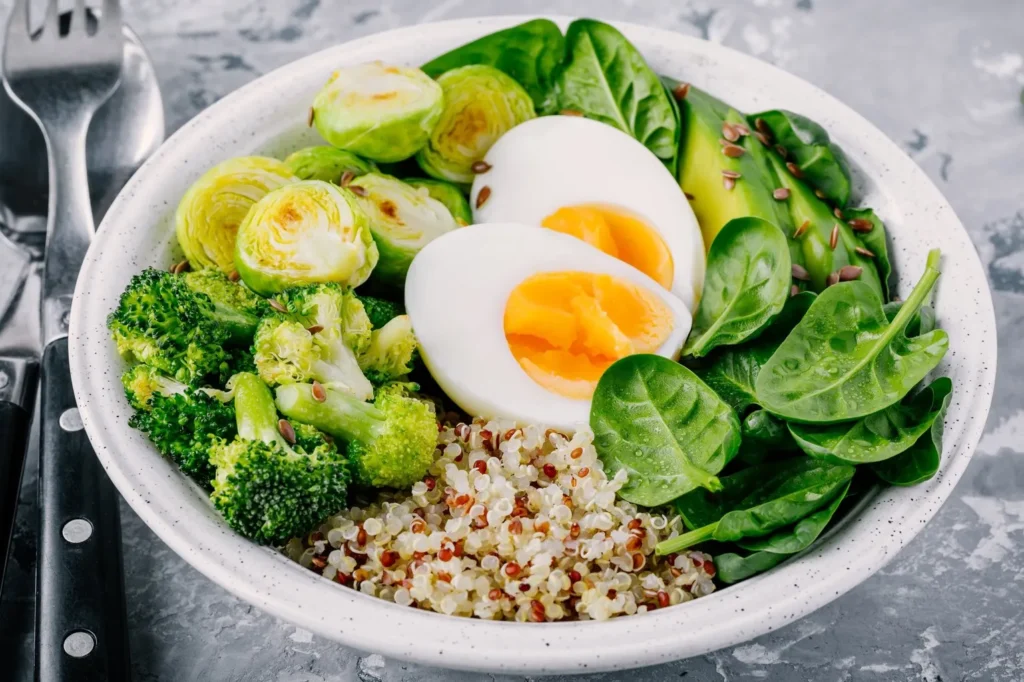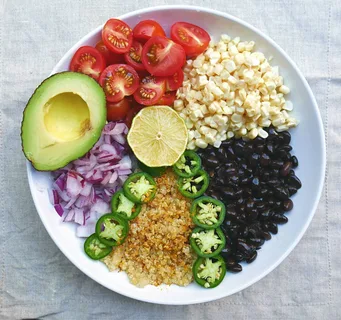Table of Contents
ToggleIs Indian Food Healthy? A Comprehensive Analysis

Indian cuisine is renowned worldwide for its vibrant flavors, diverse ingredients, and aromatic spices. It is an integral part of Indian culture, often celebrated for its taste and variety. However, when it comes to health, there is a growing curiosity about whether Indian food is healthy. This comprehensive analysis delves into the health aspects of Indian cuisine, examining its components, preparation methods, and nutritional value to answer the question: Is Indian food healthy?
The Diversity of Indian Cuisine
Indian cuisine is not a monolith; it encompasses a wide range of regional and cultural variations. Each region has its own distinct flavors, ingredients, and cooking techniques. From the rich and creamy dishes of North India to the spicy and tangy flavors of South India, the diversity is immense. Despite this diversity, there are common elements that define Indian cuisine and contribute to its health profile.
Common Ingredients in Indian Cuisine
- Spices and Herbs: Indian food is known for its extensive use of spices and herbs, such as turmeric, cumin, coriander, cardamom, ginger, garlic, and fenugreek. These spices not only enhance the flavor but also have numerous health benefits. For example, turmeric contains curcumin, which has anti-inflammatory and antioxidant properties.
- Legumes and Pulses: Lentils, chickpeas, beans, and peas are staples in Indian cuisine. These are excellent sources of plant-based protein, fiber, and essential nutrients like iron and folate.
- Vegetables: Indian dishes often include a variety of vegetables, which provide vitamins, minerals, and fiber. Popular vegetables include spinach, cauliflower, okra, eggplant, and tomatoes.
- Whole Grains: Whole grains like rice, wheat, millet, and barley are commonly used in Indian cooking. Whole grains are rich in fiber, vitamins, and minerals, and they provide sustained energy.
- Fruits: Fruits such as mangoes, bananas, pomegranates, and citrus fruits are frequently consumed either fresh or as part of dishes.
- Dairy Products: Dairy is a significant part of Indian cuisine, with yogurt, milk, ghee (clarified butter), and paneer (Indian cottage cheese) being commonly used.
Health Benefits of Indian Cuisine
- Anti-Inflammatory Properties: Many Indian spices, such as turmeric, ginger, and garlic, have anti-inflammatory properties. Chronic inflammation is linked to numerous health issues, including heart disease, diabetes, and cancer. Including these spices in the diet can help reduce inflammation.
- Rich in Antioxidants: Spices and herbs used in Indian cuisine are rich in antioxidants, which protect the body from oxidative stress and free radical damage. This can help prevent chronic diseases and promote overall health.
- Heart Health: A typical Indian diet includes legumes, whole grains, vegetables, and healthy fats, all of which contribute to heart health. These foods can help lower cholesterol levels, regulate blood pressure, and reduce the risk of heart disease.
- Digestive Health: The high fiber content in Indian food, from legumes, vegetables, and whole grains, promotes digestive health. Fiber aids in regular bowel movements, prevents constipation, and supports a healthy gut microbiome.
- Diabetes Management: Many Indian foods have a low glycemic index, which helps in managing blood sugar levels. Whole grains, legumes, and vegetables release glucose slowly into the bloodstream, preventing spikes in blood sugar levels.
- Weight Management: A diet rich in fiber, protein, and healthy fats can aid in weight management. Fiber and protein promote satiety, reducing overall calorie intake and preventing overeating.
Potential Health Concerns
While Indian cuisine has many health benefits, there are also potential concerns, primarily related to preparation methods and the use of certain ingredients.
- High Fat Content: Some traditional Indian dishes can be high in fat, particularly those prepared with ghee, cream, and deep-frying. High fat intake, especially saturated and trans fats, can contribute to weight gain, heart disease, and other health issues.
- High Sugar Content: Indian sweets and desserts, such as gulab jamun, jalebi, and laddoo, are often high in sugar. Excessive sugar consumption can lead to obesity, diabetes, and other metabolic disorders.
- High Sodium Content: Processed foods and restaurant dishes can be high in sodium due to the use of salt and commercial spice blends. High sodium intake is associated with hypertension and increased risk of cardiovascular diseases.
- Portion Sizes: Large portion sizes can lead to excessive calorie intake. Traditional Indian meals are often served with multiple dishes, which can make it easy to overeat.
Tips for Making Indian Food Healthier

- Use Healthy Cooking Methods: Opt for grilling, baking, steaming, or sautéing instead of deep-frying. These methods reduce the fat content of dishes while preserving their nutritional value.
- Choose Healthy Fats: Use oils high in unsaturated fats, such as olive oil or mustard oil, instead of ghee or butter. Incorporate nuts and seeds for healthy fat sources.
- Reduce Sugar and Salt: Limit the use of sugar and salt in cooking. Use natural sweeteners like honey or jaggery in moderation, and enhance flavor with herbs and spices instead of relying on salt.
- Increase Vegetable Intake: Make vegetables the star of the meal by incorporating a variety of colorful, seasonal vegetables in dishes. This increases fiber and nutrient intake.
- Control Portion Sizes: Be mindful of portion sizes and try to maintain a balanced plate with appropriate servings of proteins, carbohydrates, and vegetables.
- Use Whole Grains: Choose whole grains like brown rice, whole wheat, and millet over refined grains. These provide more fiber and nutrients.
- Limit Processed Foods: Avoid processed and packaged foods that are often high in sodium, unhealthy fats, and additives. Opt for fresh, whole ingredients.
Sample Healthy Indian Meal Plan

Here is a sample one-day meal plan that incorporates healthy Indian foods:
Breakfast:
- Vegetable Upma: A savory porridge made with semolina and mixed vegetables, seasoned with mustard seeds, curry leaves, and green chilies.
- Masala Chai: A spiced tea made with black tea, ginger, cardamom, and a touch of milk.
Mid-Morning Snack:
- Fruit Salad: A mix of seasonal fruits like papaya, pomegranate, and kiwi.
Lunch:
- Brown Rice: Steamed brown rice as a healthy whole grain option.
- Chana Masala: A chickpea curry cooked with tomatoes, onions, garlic, ginger, and spices.
- Saag Paneer: A spinach and paneer (Indian cottage cheese) dish seasoned with cumin, coriander, and garam masala.
Afternoon Snack:
- Roasted Chickpeas: Seasoned with a pinch of salt, chili powder, and cumin.
Dinner:
- Grilled Tandoori Chicken: Chicken marinated in yogurt and spices, then grilled to perfection.
- Mixed Vegetable Stir-Fry: A medley of vegetables sautéed with mustard seeds, curry leaves, and turmeric.
- Whole Wheat Chapati: A whole grain flatbread.
Evening Snack:
- Masala Roasted Nuts: A mix of roasted almonds, cashews, and peanuts seasoned with curry leaves and spices.
Also read: What Are the Best 32 Foods That Burn Belly Fat Fast?
Conclusion: Is Indian Food Healthy? A Comprehensive Analysis
Indian cuisine, with its rich diversity and flavourful ingredients, offers a wealth of health benefits when prepared and consumed mindfully. The extensive use of spices and herbs, along with an emphasis on plant-based foods, whole grains, and legumes, makes it inherently healthy. However, traditional cooking methods and certain ingredients can pose health risks if not moderated. By adopting healthier cooking practices, controlling portion sizes, and making mindful choices, one can enjoy the delicious flavours of Indian food while maintaining a balanced and nutritious diet.
Ultimately, whether Indian food is healthy depends on how it is prepared and consumed. Emphasising fresh, whole ingredients and avoiding excessive fats, sugars, and sodium can make Indian cuisine a valuable part of a healthy diet. Embracing the healthful aspects of Indian food allows for a delicious and nutritious way of eating that supports overall well-being.